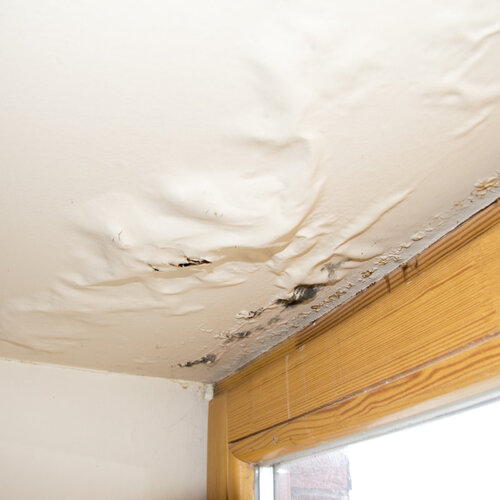Identifying the Primary Reasons for Leakage in The Home
Identifying the Primary Reasons for Leakage in The Home
Blog Article
What are your thoughts on Most Common Causes of Leaky Pipes?

Leaks not only trigger waste of water yet can likewise cause unneeded damage to your residence and advertise unwanted natural growth. Unfortunately, water leakages might go unnoticed considering that most of the pipework in our house is concealed. By looking and recognizing for day-to-day scenarios that trigger leaks, you can protect your house from future leaks and unnecessary damages. Today, we will take a look at 6 leak causes that may be creating your pipelines to leak.
Intruding origins
Many water leakages start outside your home rather than inside it. If you discover an abrupt decrease in water stress, state in your tap, take some time to go out and also examine your backyard. You might see wet spots or sinkholes in your backyard, and that may indicate that tree origins are getting into water lines creating water to permeate out. You can have your plumber check for intrusion, specifically if you have trees or hedges near your residential property.
Corroded water systems
As time goes by, your plumbing system ages and also deterioration such as corrosion might begin gnawing the pipelines. This could be the cause of discoloration or warping on your pipes. This asks for an inspection with your plumber right away. Take into consideration replacing the pipes because they are at a higher threat of rust than the more recent designs if our plumbing system is old.
Defective Pipe Joints
Pipeline joints can degrade over time, resulting in water leakages. If you have noisy pipes that make ticking or banging sounds, specifically when the warm water is turned on, your pipe joints are possibly under a whole lot of stress.
Instant temperature level adjustments.
Extreme temperature level adjustments in our pipes can create them to expand as well as acquire all of a sudden. This expansion as well as tightening might trigger cracks in the pipelines, especially if the temperature are below freezing. It would certainly be best if you kept an eye on just how your plumbing works. The existence of the previously mentioned situations regularly suggests a high danger.
Poor Water Connectors
At times, a leakage can be caused by loose pipes as well as pipes that supply your appliances. In case of a water links leakage, you may see water running straight from the supply line or pools around your appliances.
Obstructed Drains
Obstructed drains may be bothersome and also inconveniencing, yet they can in some cases end up triggering an overflow bring about break pipelines. Maintain eliminating any type of materials that might drop your drains that could clog them to stay clear of such aggravations.
All the above are sources of leaks but not all water leakages arise from plumbing leaks; some leakages may originate from roofing leaks. All leakages must be repaired quickly to prevent water damages.
Leaks not just cause waste of water yet can also trigger unneeded damages to your residence and promote unwanted organic growth. By looking and understanding for everyday situations that cause leaks, you can shield your residence from future leakages and also unneeded damage. Today, we will look at six leak triggers that might be triggering your pipes to drip.
At times, a leakage can be created by loose hoses and also pipelines that supply your devices. In instance of a water links leakage, you might observe water running directly from the supply line or puddles around your home appliances.
How To Check For Water Leak In Your Home
How To Check for Leaks
The average household's leaks can account for nearly 10,000 gallons of water wasted every year and ten percent of homes have leaks that waste 90 gallons or more per day. Common types of leaks found in the home are worn toilet flappers, dripping faucets, and other leaking valves. These types of leaks are often easy to fix, requiring only a few tools and hardware that can pay for themselves in water savings. Fixing easily corrected household water leaks can save homeowners about 10 percent on their water bills.
To check for leaks in your home, you first need to determine whether you're wasting water and then identify the source of the leak. Here are some tips for finding leaks:
Take a look at your water usage during a colder month, such as January or February. If a family of four exceeds 12,000 gallons per month, there are serious leaks.
Check your water meter before and after a two-hour period when no water is being used. If the meter changes at all, you probably have a leak.
Identify toilet leaks by placing a drop of food coloring in the toilet tank. If any color shows up in the bowl after 10 minutes, you have a leak. (Be sure to flush immediately after the experiment to avoid staining the tank.)
Examine faucet gaskets and pipe fittings for any water on the outside of the pipe to check for surface leaks.
Undetected water leaks can happen without the home or business owner even realizing. If you suspect a water leak, but not able to find the source. It is time to contact a professional water leak detection service, The Leak Doctor.
How To Find a Water Leak In Your Home
https://www.leakdoctor.com/blog/How-To-Check-For-Water-Leak-In-Your-Home_AE197.html

As a passionate person who reads about Common Water Leaks In House, I think sharing that piece of writing was smart. Enjoyed our posting? Please share it. Help someone else find it. Kudos for your time. Come back soon.
Tap dripping? Phone! Report this page